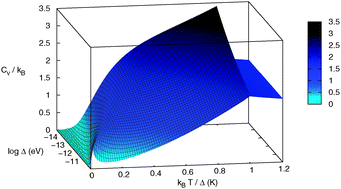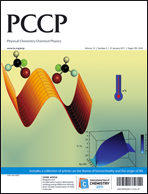An alternative route to detect parity violating energy differences through Bose–Einstein condensation of chiral molecules
Abstract
Interactions which do not conserve parity might influence chiral compounds giving rise to a parity violating energy difference (PVED) that might have affected the evolution towards homochirality. However, this tiny effect predicted by electroweak-quantum chemistry calculations is easily masked by thermal effects, making it desirable to reach cold regimes in the laboratory. As an alternative route to the detection of the PVED, we study a simplified model of Bose–Einstein condensation of a sample of non-interacting chiral molecules, showing that it leads to a nonzero optical activity of the condensate and also to a subcritical temperature in the heat capacity, due to the internal structure of the molecule characterized by tunneling and parity violation. This predicted singular behavior found for the specific heat, below the condensation temperature, might shed some light on the existence of the thus far elusive PVED between enantiomers.

- This article is part of the themed collection: Homochirality and the origin of life

 Please wait while we load your content...
Please wait while we load your content...